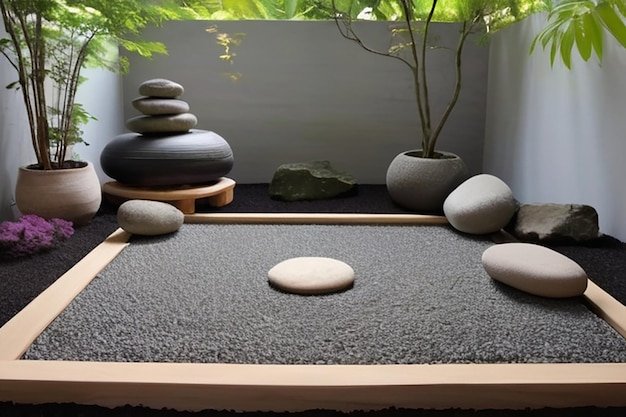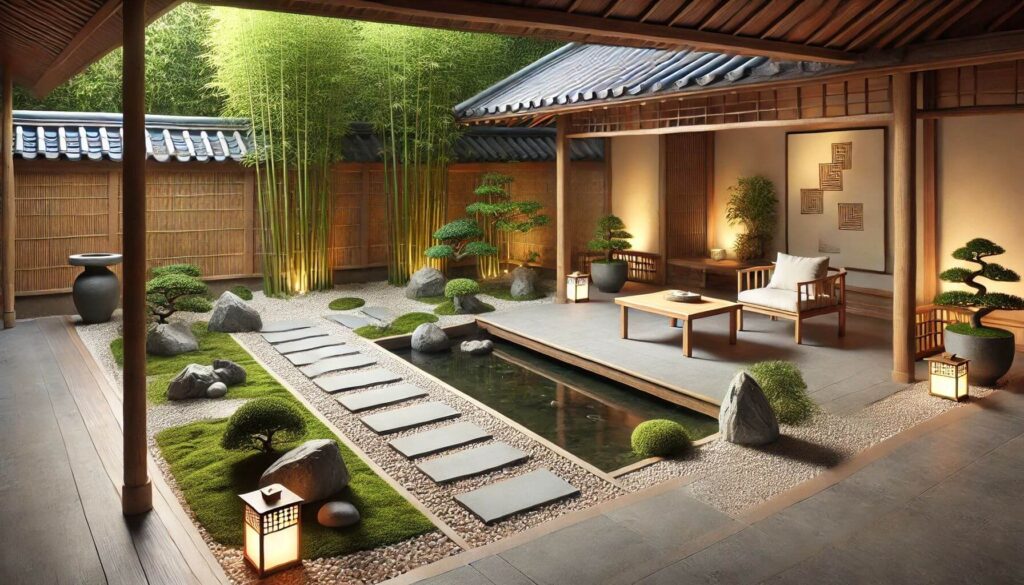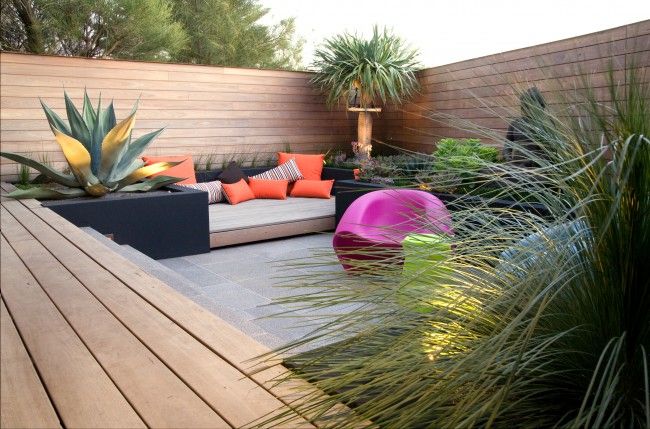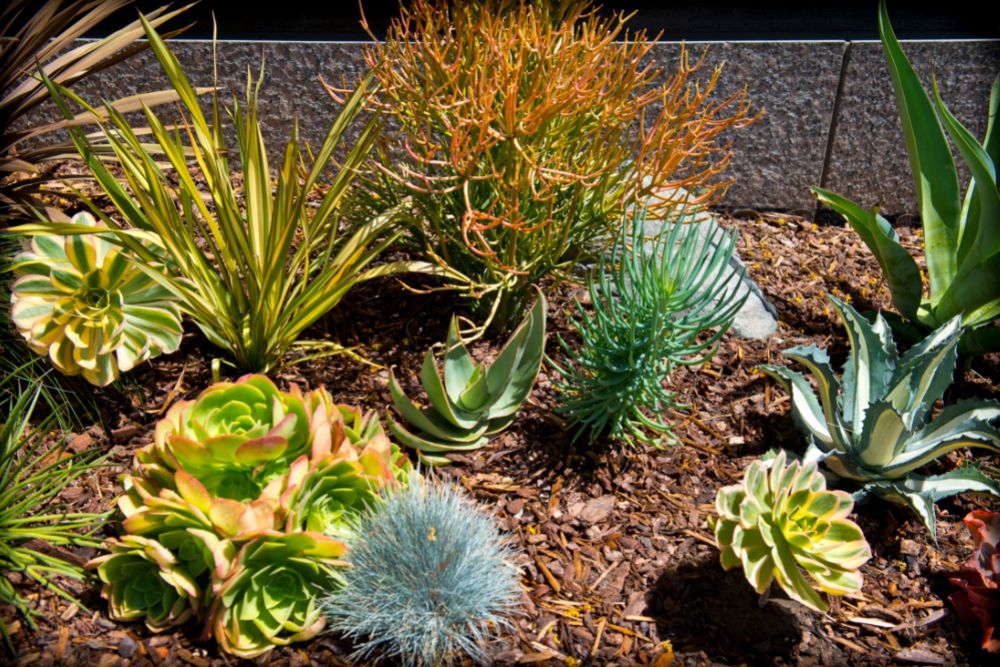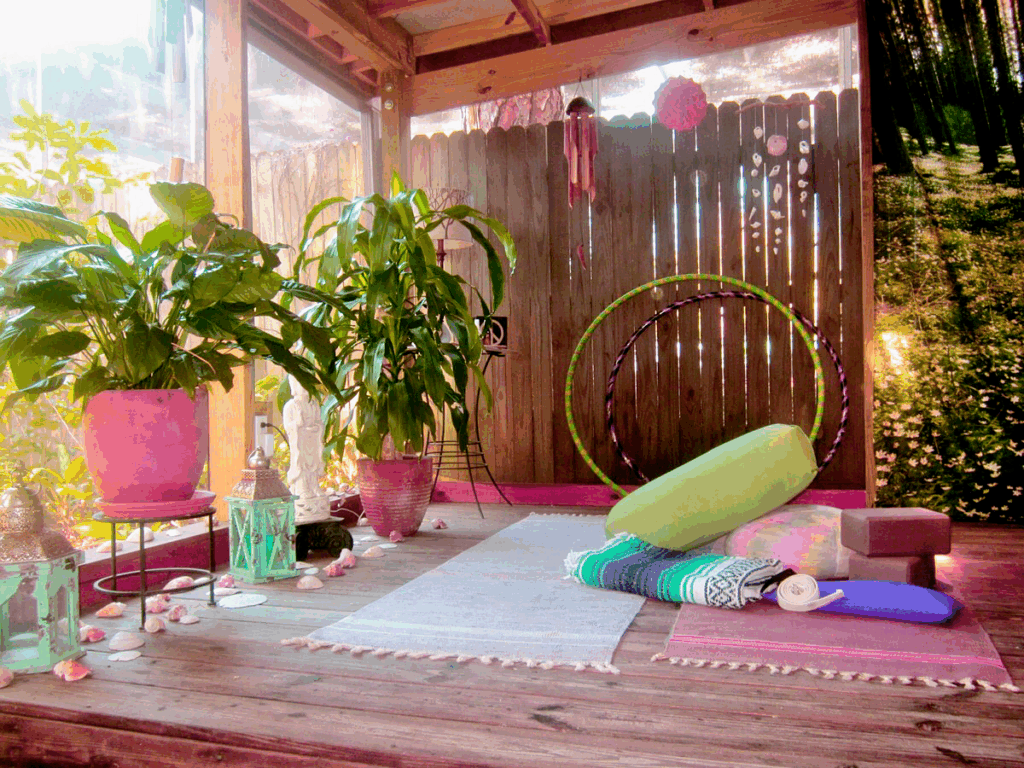
Introduction: The Power of Nature’s Embrace
In our increasingly fast-paced and technology-driven world, the need for spaces that promote well-being and healing has never been greater. We’re constantly bombarded with information, demands on our time, and the stresses of modern life. Escaping to nature, even in a small way, can provide a much-needed respite. Designing a healing outdoor space is more than just creating a pretty garden; it’s about crafting a sanctuary that nurtures the mind, body, and spirit. It’s about creating a place where you can reconnect with yourself and the natural world, finding solace and rejuvenation.
This comprehensive guide will walk you through the process of designing a healing outdoor space, from understanding the principles of biophilic design to selecting the right plants and features. We’ll explore how to create a space that fosters relaxation, reduces stress, and promotes overall well-being. Whether you have a sprawling backyard, a small balcony, or even just a sunny windowsill, you can create a healing outdoor space that transforms your life.
Understanding Biophilic Design: Connecting with Nature
At the heart of designing a healing outdoor space lies the concept of biophilic design. Biophilia, meaning “love of life” or “love of nature,” is the innate human tendency to connect with nature and other living systems. Biophilic design aims to integrate natural elements and processes into the built environment to foster this connection and improve well-being. This isn’t just about adding a few plants; it’s about creating a space that mimics the natural world and provides a sense of calm, safety, and connection.
Key Principles of Biophilic Design:
- Direct Experience of Nature: This involves incorporating natural elements like plants, water features, sunlight, and natural ventilation.
- Indirect Experience of Nature: This includes using natural materials, colors, patterns, and textures that evoke nature, even if the space itself isn’t directly connected to the outdoors.
- Space and Place Conditions: This focuses on creating spaces that offer refuge, prospect, mystery, and complexity, allowing for a sense of exploration and discovery.
By understanding and applying these principles, you can create an outdoor space that truly resonates with your innate need for connection with nature, promoting relaxation, reducing stress, and enhancing your overall sense of well-being. It’s about creating a space where you feel safe, comfortable, and inspired.
Planning Your Healing Outdoor Space: Assessment and Design
Before you start planting and building, careful planning is essential. This stage involves assessing your space, understanding your needs, and developing a design that meets both.
1. Assessing Your Space:
Begin by evaluating your existing outdoor area. Consider the following:
- Size and Shape: How much space do you have? Is it a small balcony, a backyard, or something in between?
- Sunlight and Shade: How much sunlight does your space receive throughout the day? Where are the shady areas?
- Soil Conditions: What type of soil do you have? Is it well-draining?
- Climate: What is your local climate? This will influence your plant choices and overall design.
- Existing Features: Are there any existing structures, trees, or features that you want to incorporate?
- Views and Privacy: What are the views from your space? Do you need to create privacy?
Take photos and make notes to help you visualize the space and identify potential challenges and opportunities.
2. Defining Your Needs and Goals:
What do you want to achieve with your healing outdoor space? Consider the following:
- Purpose: Do you want a space for relaxation, meditation, gardening, entertaining, or a combination of these?
- Activities: What activities will you be doing in the space? Will you be reading, practicing yoga, or simply enjoying the view?
- Personal Preferences: What colors, textures, and styles do you find appealing? What are your favorite plants?
- Accessibility: Do you need to consider accessibility for people with mobility issues?
Write down your goals and create a vision board or mood board to help you clarify your ideas.
3. Developing Your Design:
Now it’s time to put your ideas into a plan. Consider the following design elements:
- Layout: How will you arrange the different elements in your space? Consider creating distinct zones for different activities.
- Pathways: Use pathways to guide movement and create a sense of flow. Consider using natural materials like gravel or stepping stones.
- Seating: Choose comfortable and inviting seating options, such as benches, chairs, or hammocks.
- Water Features: Incorporate water features like a small fountain, bird bath, or pond to create a sense of tranquility.
- Plants: Select plants that are suitable for your climate and that provide a sense of calm and beauty. Consider incorporating plants with calming scents, textures, and colors.
- Lighting: Use soft, ambient lighting to create a relaxing atmosphere in the evening.
- Privacy: Create privacy with fences, hedges, or strategically placed plants.
- Shelter: Provide shelter from the sun and wind with a pergola, awning, or umbrella.
Sketch out your design, including measurements and plant placement. This will help you visualize the space and make adjustments as needed.
Choosing the Right Plants: The Power of Botanical Healing
Plants are the heart of any healing outdoor space. They not only add beauty and visual interest but also offer numerous therapeutic benefits. Choosing the right plants is crucial for creating a space that promotes well-being.
Key Considerations for Plant Selection:
- Climate and Growing Conditions: Choose plants that are well-suited to your local climate, sunlight, and soil conditions.
- Aesthetics: Select plants with a variety of colors, textures, and shapes to create visual interest. Consider the overall style and mood you want to create.
- Sensory Experience: Incorporate plants with calming scents, textures, and sounds. Consider plants that attract birds and butterflies.
- Maintenance: Choose plants that are relatively low-maintenance and that you enjoy caring for.
- Purpose: Consider the specific benefits you want from your plants. Do you want plants that purify the air, provide shade, or offer privacy?
Plant Suggestions for a Healing Outdoor Space:
- Lavender (Lavandula): Known for its calming scent and beautiful purple flowers. Lavender can help reduce stress and promote relaxation.
- Chamomile (Matricaria chamomilla): This herb has soothing properties and can be used to make tea.
- Mint (Mentha): Mint has a refreshing scent and can be used to make tea or added to food.
- Rosemary (Salvia rosmarinus): Rosemary has a stimulating scent and can help improve memory and focus.
- Jasmine (Jasminum): Jasmine has a sweet, intoxicating fragrance that can help reduce anxiety and promote sleep.
- Bamboo: Provides a sense of privacy and tranquility.
- Ferns: Add a lush, green touch and thrive in shady areas.
- Japanese Maple (Acer palmatum): Known for its beautiful foliage and elegant form, creating a sense of serenity.
Remember to research the specific needs of each plant and provide them with the appropriate care, including watering, fertilization, and pruning. Consider planting in a combination of containers and in the ground to create a diverse and visually appealing space.
Creating Zones for Relaxation and Well-being
Dividing your outdoor space into zones can enhance its functionality and create a sense of flow. Consider creating distinct areas for different activities, such as relaxation, meditation, and socializing.
Zone Ideas:
- Relaxation Zone: This zone should be a place for unwinding and de-stressing. Include comfortable seating, shade, and calming elements like a water feature or wind chimes.
- Meditation Zone: Create a quiet and peaceful space for meditation and mindfulness. Include a comfortable cushion or bench, a small altar, and plants that promote tranquility.
- Yoga Zone: Designate an area for practicing yoga or other forms of exercise. This area should have a flat surface and be free from clutter.
- Gardening Zone: If you enjoy gardening, create a dedicated area for growing plants. Include raised beds, containers, and a potting bench.
- Dining Zone: Create a space for enjoying meals outdoors. Include a table, chairs, and perhaps a grill or outdoor kitchen.
- Reading Nook: Design a cozy corner for reading and enjoying the outdoors. Include a comfortable chair, a small table, and good lighting.
When designing your zones, consider the flow between them. Create pathways that guide movement and connect the different areas of your space. Use plants, structures, and other elements to define the boundaries of each zone and create a sense of privacy.
Incorporating Water Features: The Soothing Sound of Nature
Water features can be a powerful addition to a healing outdoor space. The sound of flowing water has been shown to reduce stress, promote relaxation, and create a sense of tranquility. Water features also add visual interest and can attract wildlife.
Water Feature Options:
- Fountains: Fountains come in a variety of sizes and styles, from small tabletop fountains to large, multi-tiered fountains.
- Ponds: Ponds can add a natural and serene element to your space. You can include fish, plants, and other aquatic life.
- Bird Baths: Bird baths are a simple way to attract birds and add a touch of nature to your space.
- Waterfalls: Waterfalls can create a dramatic and soothing effect.
- Bubbling Rocks: Bubbling rocks are a low-maintenance option that provides the sound of flowing water.
When choosing a water feature, consider the size of your space, your budget, and your personal preferences. Choose a feature that is easy to maintain and that complements the overall style of your space. Ensure proper water circulation and filtration to maintain water clarity and prevent algae growth. Place the water feature in a location where you can enjoy its soothing sounds and visual beauty.
The Importance of Lighting: Setting the Mood
Lighting plays a crucial role in creating a healing outdoor space. It can set the mood, highlight key features, and provide a sense of safety and security. Proper lighting can transform your space from a daytime oasis to a tranquil retreat at night.
Lighting Options:
- Ambient Lighting: This type of lighting provides a soft, general illumination. Consider using string lights, lanterns, or path lights to create a relaxing atmosphere.
- Task Lighting: This type of lighting is used for specific tasks, such as reading or cooking. Consider using spotlights or directional lights.
- Accent Lighting: This type of lighting is used to highlight specific features, such as plants, sculptures, or water features. Consider using spotlights or up lights.
- Security Lighting: This type of lighting provides safety and security. Consider using motion-sensor lights or floodlights.
When choosing lighting, consider the following:
- Energy Efficiency: Choose LED lighting to save energy and reduce your environmental impact.
- Color Temperature: Choose warm-toned lighting for a more relaxing atmosphere.
- Placement: Strategically place your lights to achieve the desired effect.
- Control: Consider using a smart lighting system to control your lights remotely.
Use lighting to create a sense of depth and dimension in your space. Experiment with different lighting techniques to find what works best for you.
Adding Sensory Elements: Engaging the Senses
A healing outdoor space should engage all your senses. By incorporating sensory elements, you can create a more immersive and therapeutic experience. This goes beyond just sight and includes sounds, smells, textures, and even tastes.
Sensory Element Ideas:
- Sound: Incorporate wind chimes, a water feature, or the sounds of nature to create a calming soundscape.
- Smell: Plant fragrant herbs and flowers, such as lavender, rosemary, and jasmine, to create a calming and uplifting atmosphere.
- Texture: Use a variety of textures, such as smooth stones, rough bark, and soft grasses, to create visual and tactile interest.
- Taste: Grow edible plants, such as herbs, fruits, and vegetables, to enjoy fresh, healthy food.
- Visual: Incorporate a variety of colors, shapes, and forms to create visual interest. Use plants with different foliage colors and textures.
Consider the overall sensory experience you want to create. Think about the different elements that will engage your senses and contribute to your well-being. By creating a space that stimulates all your senses, you can enhance the healing power of your outdoor environment.
Creating Privacy and Shelter: Enhancing Comfort and Security
Privacy and shelter are essential elements of a healing outdoor space. They create a sense of security and allow you to fully relax and unwind without feeling exposed. They also protect you from the elements, such as sun, wind, and rain.
Privacy and Shelter Options:
- Fences and Walls: Fences and walls provide a solid barrier to create privacy and define the boundaries of your space.
- Hedges and Shrubs: Hedges and shrubs offer a natural and aesthetically pleasing way to create privacy and shelter.
- Pergolas and Arbors: Pergolas and arbors provide shade and create a sense of enclosure.
- Umbrellas and Awnings: Umbrellas and awnings offer protection from the sun and rain.
- Trees: Trees provide shade, privacy, and a connection to nature.
When choosing privacy and shelter options, consider the following:
- Your Needs: How much privacy and shelter do you need?
- Your Style: Choose options that complement the overall style of your space.
- Your Climate: Choose options that are suitable for your local climate.
- Maintenance: Consider the maintenance requirements of each option.
Create a space where you feel safe, secure, and comfortable. This will allow you to fully relax and enjoy the benefits of your healing outdoor space.
Maintenance and Sustainability: Long-Term Well-being
Designing a healing outdoor space is an ongoing process. Regular maintenance is essential to keep your space looking its best and to ensure its long-term sustainability. This also contributes to your well-being, as caring for your space can be a therapeutic activity in itself.
Maintenance Tips:
- Watering: Water your plants regularly, especially during dry periods.
- Pruning: Prune your plants to maintain their shape and health.
- Fertilizing: Fertilize your plants to provide them with the nutrients they need.
- Weeding: Remove weeds regularly to prevent them from competing with your plants.
- Cleaning: Clean your outdoor furniture, water features, and other features regularly.
- Inspecting: Inspect your plants and structures for any signs of damage or disease.
Sustainability Tips:
- Choose native plants: Native plants are well-adapted to your local climate and require less water and maintenance.
- Conserve water: Use water-efficient irrigation methods, such as drip irrigation.
- Compost: Compost your yard waste to create nutrient-rich soil.
- Reduce chemical use: Avoid using chemical fertilizers and pesticides.
- Recycle: Recycle any materials that you can.
By practicing regular maintenance and incorporating sustainable practices, you can create a healing outdoor space that thrives for years to come. This will not only benefit your well-being but also contribute to the health of the environment.
Conclusion: Embrace the Healing Power of Nature
Designing a healing outdoor space is a journey of self-discovery and creativity. It’s about creating a sanctuary where you can escape the stresses of everyday life and reconnect with nature. By incorporating the principles of biophilic design, selecting the right plants, and creating zones for relaxation and well-being, you can transform your outdoor area into a place of peace and rejuvenation.
Remember to plan carefully, consider your needs and goals, and embrace the power of nature. With a little effort, you can create a healing outdoor space that nurtures your mind, body, and spirit. So, step outside, breathe deeply, and allow the healing power of nature to embrace you.
